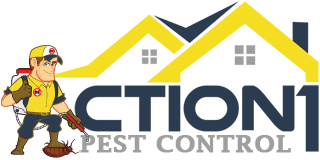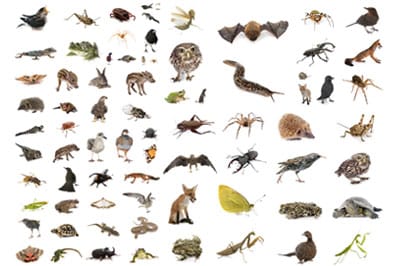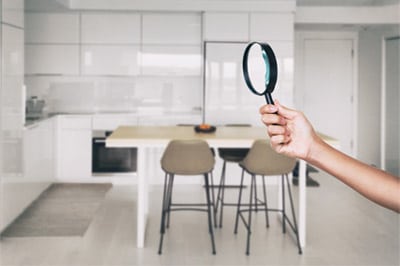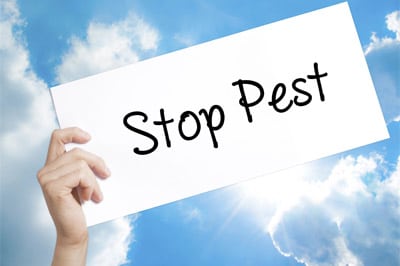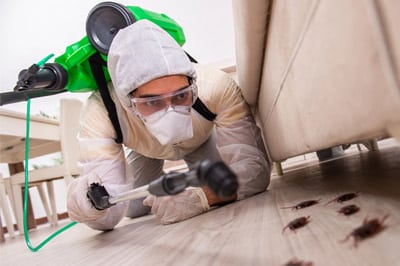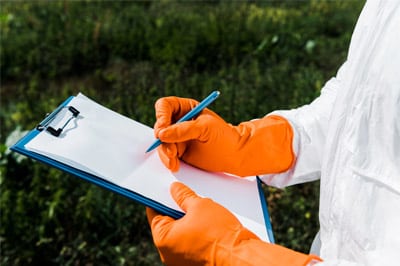Bed Bug Control and Extermination
Call Us Today- Home
- »
- Pest Control
- »
- Bed Bugs
The key to successful bed bug control lies in combining proper identification, thorough preparation, and a comprehensive treatment approach that may include both DIY methods and professional intervention. Unlike many other household pests, bed bugs require specialized strategies because they reproduce rapidly and can survive for months without feeding.
We’ll guide you through understanding these resilient insects, recognizing the signs of infestation, and how we implement effective control measures.
Highly Trusted Bed Bug Extermination Company

High Quality Services

Affordable & Upfront Pricing

Emergency Same Day Service
Understanding Bed Bugs
Physical Characteristics and Life Cycle
Color changes occur based on feeding status. Unfed bed bugs appear brown or mahogany colored. After consuming blood, they become reddish and more swollen.
Bed bugs are wingless insects that cannot fly or jump. They move by crawling and can travel several feet to reach their host.
The life cycle includes five nymphal stages before reaching adulthood. Each stage requires a blood meal to molt to the next phase. Under optimal conditions, bed bugs complete development from egg to adult in approximately 5-7 weeks.
Eggs are tiny, white, and about 1 millimeter in size. Females lay 1-5 eggs daily in protected areas like mattress seams or furniture joints.
Behavior and Habitats
Feeding behavior involves piercing skin with specialized mouthparts and injecting saliva containing anticoagulants. A single feeding session lasts 3-10 minutes.
Common hiding places include:
- Mattress seams and box springs
- Bed frames and headboards
- Upholstered furniture
- Carpet edges
- Picture frames
- Electrical outlets
Bed bugs prefer environments close to sleeping areas but can establish harborages up to 20 feet from hosts. They survive several months without feeding, making detection challenging.
Temperature preferences range between 70-80°F for optimal reproduction. They become less active in cooler temperatures but rarely die from cold exposure alone.
Common Myths and Misconceptions
Reality: Bed bugs infest any environment where humans sleep, regardless of cleanliness levels. We find them in luxury hotels, clean apartments, and well-maintained homes.
Myth: Bed bugs transmit diseases
Reality: No scientific evidence supports disease transmission by bed bugs to humans, despite their blood-feeding behavior.
Myth: Bed bugs are invisible to the naked eye
Reality: Adult bed bugs are clearly visible without magnification. Research shows 76% of suspected bed bug samples submitted for identification are actually other insects.
Myth: Bed bugs only live in beds
Reality: While beds provide optimal conditions, bed bugs inhabit various furniture pieces, electronics, and structural elements throughout infested rooms.
Our 5 Step Pest and Bed Bug Control Process

Recognizing Early Signs of Bed Bugs
Visible Bed Bugs and Shed Skins
Nymphs appear smaller and lighter in color than adults. We can spot them moving along mattress seams during nighttime inspections with a flashlight.
Shed exoskeletons provide clear evidence of a growing population. As bed bugs mature, they leave behind pale, yellowish shells that collect in hiding spots.
Common locations to check:
- Mattress seams and box spring corners
- Bed frame joints and headboard crevices
- Upholstered furniture cushions
- Behind picture frames near beds
- Electrical outlets close to sleeping areas
We should inspect these areas during daylight hours when bedbugs are less active. Look for clusters of bugs or skins rather than individual specimens.
Unusual Bites on the Skin
Distinctive patterns help distinguish bed bug bites from other insect bites. Clusters of three bites in a row create the “breakfast, lunch, and dinner” pattern.
Bite characteristics:
- Size: 2-5mm in diameter
- Color: Red to dark red welts
- Sensation: Intense itching that worsens over time
- Timeline: Appear within hours to days after feeding
Not everyone reacts to bed bug bites the same way. Some people show no visible reaction while others develop severe allergic responses with blistering or swelling.
We should note that bites alone don’t confirm an infestation. Other evidence must support this finding since many insects cause similar reactions.
Blood Stains and Fecal Spots
Fecal spots look like dark rust-colored or black stains about the size of a period. Bedbugs leave these digested blood deposits in areas where they rest and hide.
Testing fecal stains:
- Dampen a cloth with water
- Gently wipe the suspected stain
- If it smears or bleeds, it’s likely bed bug excrement
We find these stains most commonly along mattress seams, behind headboards, and in furniture joints. Fresh blood stains appear bright red while older stains turn brown or black.
Stain locations to examine:
- Sheet and pillowcase edges
- Mattress tags and seams
- Box spring fabric
- Wall areas behind beds
Musty Odors in Sleeping Areas
Odor characteristics:
- Intensity: More noticeable in severe infestations
- Description: Sweet, musty, or coriander-like scent
- Location: Concentrated around sleeping areas and furniture
We typically detect this odor when populations reach substantial numbers. Smaller infestations rarely produce noticeable smells. The scent becomes stronger in enclosed spaces like bedrooms with poor ventilation. We should investigate any unusual odors combined with other signs of bed bug activity.
When odors are most apparent:
- Early morning hours after nighttime feeding
- In rooms with multiple hiding spots
- During warm weather when scent glands are more active
What to Do If You Suspect Bed Bugs
Initial Steps to Confirm Infestation
Look for these specific signs during your inspection:
- Blood stains on sheets from crushed bugs
- Dark spots smaller than a pinhead (bed bug excrement)
- Reddish-brown stains on pillows and mattresses
- Shed skins that appear yellowish and translucent
- Sweet, musty odors in heavily infested areas
Use a flashlight and magnifying glass to examine cracks and crevices thoroughly. Check upholstered furniture, curtain folds, and areas where walls meet baseboards.
Document your findings with photos. This evidence helps pest control professionals assess the situation and can be useful for insurance claims. If you find live bedbugs, place them in a sealed container for professional identification. Adult bed bugs are about the size of an apple seed and appear flat and brown when unfed.
When to Contact Our Team
Contact pest control professionals in these situations:
- Finding live bed bugs anywhere in your home
- Discovering multiple bite patterns on family members
- Locating bed bug eggs or shed skins
- Detecting the characteristic musty smell
- Previous DIY attempts have failed
Professional exterminators use heat treatments, specialized chemicals, and integrated pest management approaches that are more effective than store-bought solutions. Many companies offer guarantees and follow-up treatments.
Get quotes from at least three licensed pest control companies. Ask about their treatment methods, guarantee policies, and estimated timeline for elimination.
Preventing Further Spread in Your Home
We must take immediate containment steps to prevent bed bugs from spreading to other rooms. Start by washing all bedding, clothing, and fabric items in hot water at 120°F or higher, then dry on high heat for at least 30 minutes.
Essential containment measures:
- Vacuum mattresses, carpets, and upholstered furniture thoroughly
- Seal vacuum contents in plastic bags before disposal
- Place infested items in sealed plastic bags until treatment
- Avoid moving furniture or belongings from infested rooms
Use mattress and box spring encasements designed for bed bug protection. These traps any remaining bugs inside and prevents new infestations. Reduce clutter around sleeping areas to eliminate hiding spots. Store clothing and linens in sealed plastic containers rather than cardboard boxes.
Inform family members about the infestation and establish protocols for handling potentially contaminated items. Everyone in the household should check for bed bug bites and report new symptoms immediately.
Preventing Further Spread in Your Home
Essential containment measures:
- Vacuum mattresses, carpets, and upholstered furniture thoroughly
- Seal vacuum contents in plastic bags before disposal
- Place infested items in sealed plastic bags until treatment
- Avoid moving furniture or belongings from infested rooms
Use mattress and box spring encasements designed for bed bug protection. These traps any remaining bugs inside and prevents new infestations. Reduce clutter around sleeping areas to eliminate hiding spots. Store clothing and linens in sealed plastic containers rather than cardboard boxes.
Inform family members about the infestation and establish protocols for handling potentially contaminated items. Everyone in the household should check for bed bug bites and report new symptoms immediately.
Health Effects and Risks
Physical Reactions to Bites
Bite characteristics include:
- Reddish-brown welts ranging from 1-5mm in diameter
- Itching that can persist for several days
- Bite marks appearing on arms, legs, neck, and face
Individual reactions vary significantly from person to person. Some people show no visible reaction to bites, while others develop pronounced swelling and irritation.
The timing of bite reactions differs among individuals. Reactions may appear immediately after feeding or take up to 14 days to become visible on the skin.
Secondary infections can develop when people scratch bite sites excessively. Common bacterial infections include impetigo, ecthyma, and lymphangitis, which require medical treatment.
We recommend avoiding scratching and applying topical treatments to reduce itching and prevent infection.
Allergic Responses
Mild allergic symptoms include:
- Excessive swelling around bite sites
- Persistent redness lasting more than one week
- Intense itching that interferes with daily activities
Severe allergic reactions may involve:
- Widespread hives or rash beyond bite locations
- Difficulty breathing or wheezing
- Swelling of face, lips, or throat
Systemic reactions require immediate medical attention. People with known allergies to insect bites face higher risks of severe responses to bed bug feeding.
Antihistamines can help manage mild allergic reactions. Topical corticosteroids reduce inflammation and itching when applied to affected areas.
We advise consulting healthcare providers for persistent or worsening allergic symptoms following bed bug exposure.
Impact on Sleep and Well-Being
Sleep disruption occurs through:
- Fear of being bitten during sleep
- Itching and discomfort from existing bites
- Checking behaviors that prevent restful sleep
Mental health effects include:
- Chronic anxiety about pest presence
- Social isolation due to infestation stigma
- Depression from prolonged sleep deprivation
Insomnia becomes common as people avoid their beds or wake frequently to check for bugs. This sleep loss affects work performance, mood stability, and overall health.
The psychological burden often persists even after successful pest elimination. Many people continue experiencing anxiety and sleep difficulties weeks or months following treatment.
Social consequences include reluctance to have guests visit and embarrassment about the infestation. These feelings contribute to isolation and relationship strain.

Why Hire Our Team
Our professional pest control techs use integrated pest management approaches and specialized equipment to eliminate bed bug infestations more effectively than DIY methods. Our pest management professionals can identify the extent of the problem and apply targeted treatments that address all life stages of bed bugs.
We recommend contacting us as soon as you discover bed bugs in your home. Early intervention prevents the infestation from spreading to other rooms and becoming more difficult to control.
Key indicators that require professional help:
- Multiple rooms affected
- Recurring infestations after DIY attempts
- Large numbers of bed bugs visible
- Bites appearing on multiple family members
Taking time to attempt self-treatment often allows bed bugs to multiply and establish deeper infestations. Our pest control contractors have access to commercial-grade treatments and heat equipment that aren’t available to consumers.
You should also consider our professional services for sensitive environments like nurseries or homes with elderly residents. Our pest management professionals can customize treatments to minimize chemical exposure while maintaining effectiveness.
Our pest management professional will begin with a thorough inspection of your residence, examining furniture, mattresses, and potential hiding spots.
Typical treatment process includes:
- Furniture disassembly for access to hiding spots
- Vacuuming of infested areas
- Laundering bedding and clothing at high temperatures
- Heat treatment or chemical application
- Follow-up monitoring visits
Our pest management professional will explain specific preparation requirements for successful treatment. Multiple treatment visits are usually necessary since very few infestations are eliminated with a single application. Our pest control techs will schedule follow-up appointments and monitor for any missed bed bugs during the treatment process.
